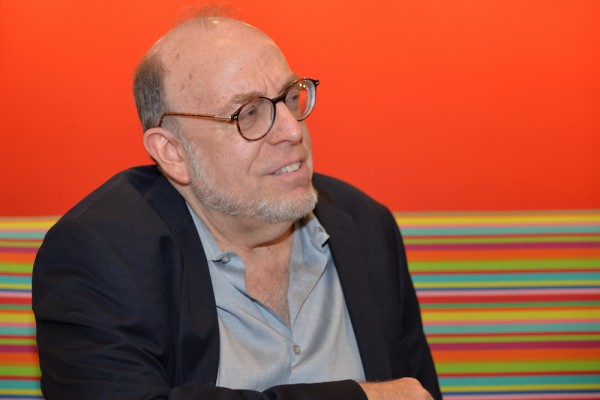Harold Meyerson is executive editor of American Prospect; he held the same position at the L.A. Weekly from 1989 through 2001. Before joining a Zócalo/Museum of Contemporary Art panel discussion on a decade of great political and cultural upheaval in Los Angeles—“Were the ’90s L.A.’s Golden Age?”—he talked in the Zócalo green room about revisiting Tolstoy, why coffee comforts him, and what the first sentence of his obituary might read.
Q: What’s the last great book you read?
A: For some utterly bizarre reason, possibly an urge to find something that would help me procrastinate, for the first time in 35 years I just re-read War and Peace. For Tolstoy’s particularly weird and somewhat both hagiographic and patronizing take on Russian peasants, it held up. A relief to us all.
Q: What’s your comfort food?
A: My default reverting to eating or drinking anything is always coffee. It’s comforting that I’m awake I suppose.
Q: Write the first sentence of your obituary.
A: “Harold Meyerson, a displaced Angeleno who wandered the globe after he left, died today in a fit of longing for the Los Angeles of yore.” How about that?
Q: Where do you come up with your best column ideas?
A: I read an inordinate number of newspapers, websites, studies, and data, and I get real pissed off.
Q: Are you good at keeping secrets? Who can vouch for you?
A: Let me tell ya. When did I last … Yeah, I am. The right answer to that would be nobody. [Laughs.]
Q: How did you get into trouble as a kid?
A: I didn’t get into too much trouble as a kid because I read obsessively, and that took me out of certain activities that would have been trouble. Later on in high school, in West L.A. in the mid to late ’60s, once we could drive we could kind of careen around the city at all hours. I remember walking all around Union Station, including the tracks, at about 3 a.m. with some friends, having probably smoked a joint. We didn’t get in trouble. There was no security in those days.
Q: What’s hanging on your living room walls?
A: Other than overflowing bookcases, there’s a large photo of Louis Armstrong. There is a Diego Rivera-esque print that my mom and dad got as far back as the early ’40s, which I took after they were both gone. And in the kitchen there’s a photograph called “Crookneck Squash in Surgery,” showing three crookneck squash in surgical garb operating on a fourth.
Q: How do you unwind?
A: I listen to music. I watch non-challenging television on occasion. That basically consists of Law & Order reruns. Depending on the weather in D.C., I can be walking around. There’s about 50 days a year when it’s not wretchedly hot and humid or cold and wet.
Q: You’re the author of Who Put The Rainbow in The Wizard of Oz?, a biography of Broadway and Hollywood lyricist Yip Harburg. What’s the best song in The Wizard of Oz?
A: In some ways the most impressive thing is the Munchkin operetta, which goes on for seven minutes, and is a whole display of this slightly warped society with all of these stereotyped characters comically transmuted by the crazy lyrics of Yip Harburg. And of course “Over the Rainbow” is obviously a masterpiece of its kind, although it was not the favorite song of its composer [Harold Arlen] and lyricist [Harburg]. I think if you asked Arlen and Harburg what their favorite song they composed was, they would have said “Last Night When We Were Young,” which went nowhere when they wrote it but was later sung by Sinatra and Garland and a few others.
Q: Spicy, medium, or mild?
A: I’m really dull. Medium. I’m not so dull that it would be mild, though.
*Photo by Steve Hymon.










